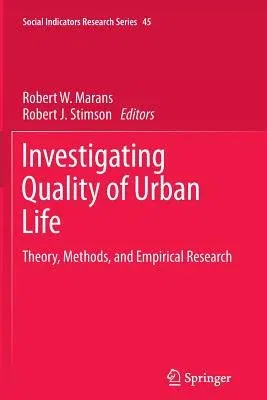The work synthesizes past and current research on the quality of urban
life that has been done internationally. It emphasizes the contributions
of the urban environment to the overall well-being of residents living
in urban areas ranging in scale from small cities and their hinterlands
to metropolitan regions. By urban environment, we mean the
socio-physical aspects of urban living ranging from individual dwellings
and neighbourhoods to public services (i.e. transportation, rubbish
collection, etc.) to neighbours and community organizations. The work
emphasizes not only perceptions of and behaviours within urban
environments but the actual conditions to which individuals are
responding. That is, the research covers both the subjective and
behavioural aspects of urban living but also the objective conditions
which drive them.
The work that has been underway is theoretically driven and will
contribute to knowledge in several academic disciplines. At the same
time, it is designed to inform public policy and planning in each
setting.
This book stems from a long period of collaborative research between the
editors, research colleagues, and their graduate students. It als draws
on collaborative research with international scholars investigating
aspects of urban quality of life in their respective settings. Many of
these efforts parallel work initiated by the editors in metro Detroirt
and in southeast Queensland. It involves research that incorporated
theoretical and methodological appraches to the conceptualizing and
measuring quality of life. The book will cover research designs that are
based on both the analysis and modelling of aggregate secondary data and
the collection, analysis and modelling of primary survey data on
subjective urban quality of life. It also covers the interface of survey
data with spatial objective data using GIS techniques.
The book will comprise chapters which: 1) provide an overview of
theoretical perspectives on the study of urban quality of life; 2)
present research designs for the collection of data to measure and model
QoL domains; 3) provide a series of case studies of urban QoL in a
number of around the world.


